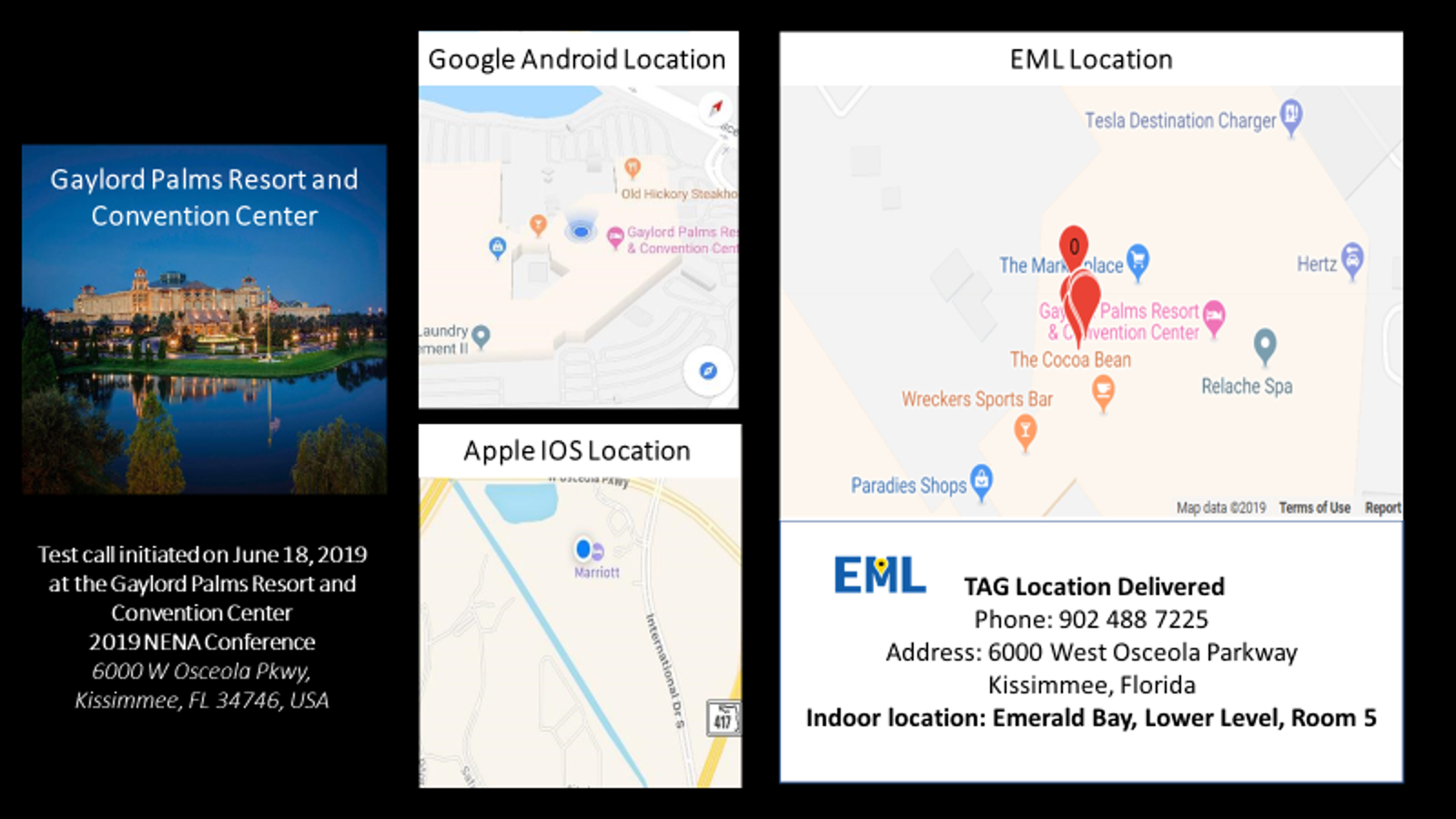Blog
Opportunity is missed by most people because it is dressed in overalls and looks like work
June 16, 2021

Globally, over 80% of calls to the Emergency Services are made from a mobile device, and accurate location of the emergency caller is still the most significant challenge.
EML, Emergency Mobile Location, is the next step in the evolution of emergency caller location.
Using GPS, Wi-Fi, and a unique identifier or TAG- based system to pinpoint a mobile devices location, EML offers a
- Verified dispatchable civic address
- Operates in rural, urban & indoor locations
- Has no international roaming challenges
- Provides a vertical reference as a floor and/or room number
- Fully GDPR compliant
EML can provide accurate legacy address and placement information for ALL mobile callers and provides the “right door to knock on”.
So how does it work?
- Using the existing Wi-Fi ecosystem, EML turns proximity Wi-Fi Access Points (APs) into a network of verified location datapoints, or TAGs.
- These TAGs are unique identifiers for each and every access point.
- During an emergency mobile call the mobile handsets protocols turn on and begin collecting any GPS and Wi-Fi data nearby. At the same time TAG information is also collected. Up to 50 TAGs may be picked up during one call. Each TAG is encrypted in transport to ensure compliance with privacy and security requirements. TAGs are sent along the data network, with the GPS coordinates, to an EML server, which is part of the EML Service.
- The EML Service also consists of a location database which stores the installation locations of the Wi-Fi access points.
- All information collected (incl. GPS, Wi-Fi, EML TAGs) is used by the EML server to determine an accurate verified dispatchable address and the device’s handset GPS location values.
- A Dispatchable address is based on and contains:
- GPS coordinates, represented as x -axis (latitude) and y-axis (longitude)
- Z-axis (altitude)
- County/State/Province, City/Town, and civic street address
- Indoor location, with useable information such as floor, room, apartment number
- The EML server communicates this converted location information to the public safety answering point (PSAP) servers or Operators.
- This location information is them provided to the first responders, enabling them to provide help faster and more efficiently, saving more lives.
At the NENA conference in 2019, ELi Technology conducted live test case scenarios at the Gaylord Palms convention center.
The tests provide comparative results on what location accuracy provides today, and what could be possible through the deployment of EML:

The location detail with EML accomplishes the Industry goal of a dispatchable address for emergency mobile calls.
EML will help the Emergency Number Network save more lives with better mobile localization.
Our email next week will discuss more around how EML would benefit stakeholders in the emergency number network.
In the meantime, if you would like to discover how EML could impact your service, business, industry or association, please reply to this email: info@eli-technology.com, or contact us through our website: https://eli-technology.com/general